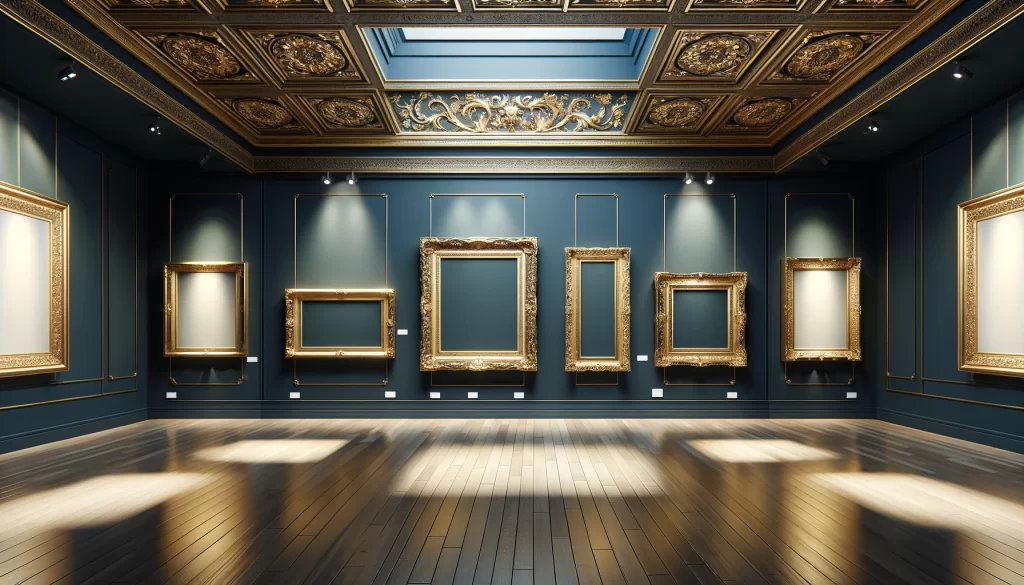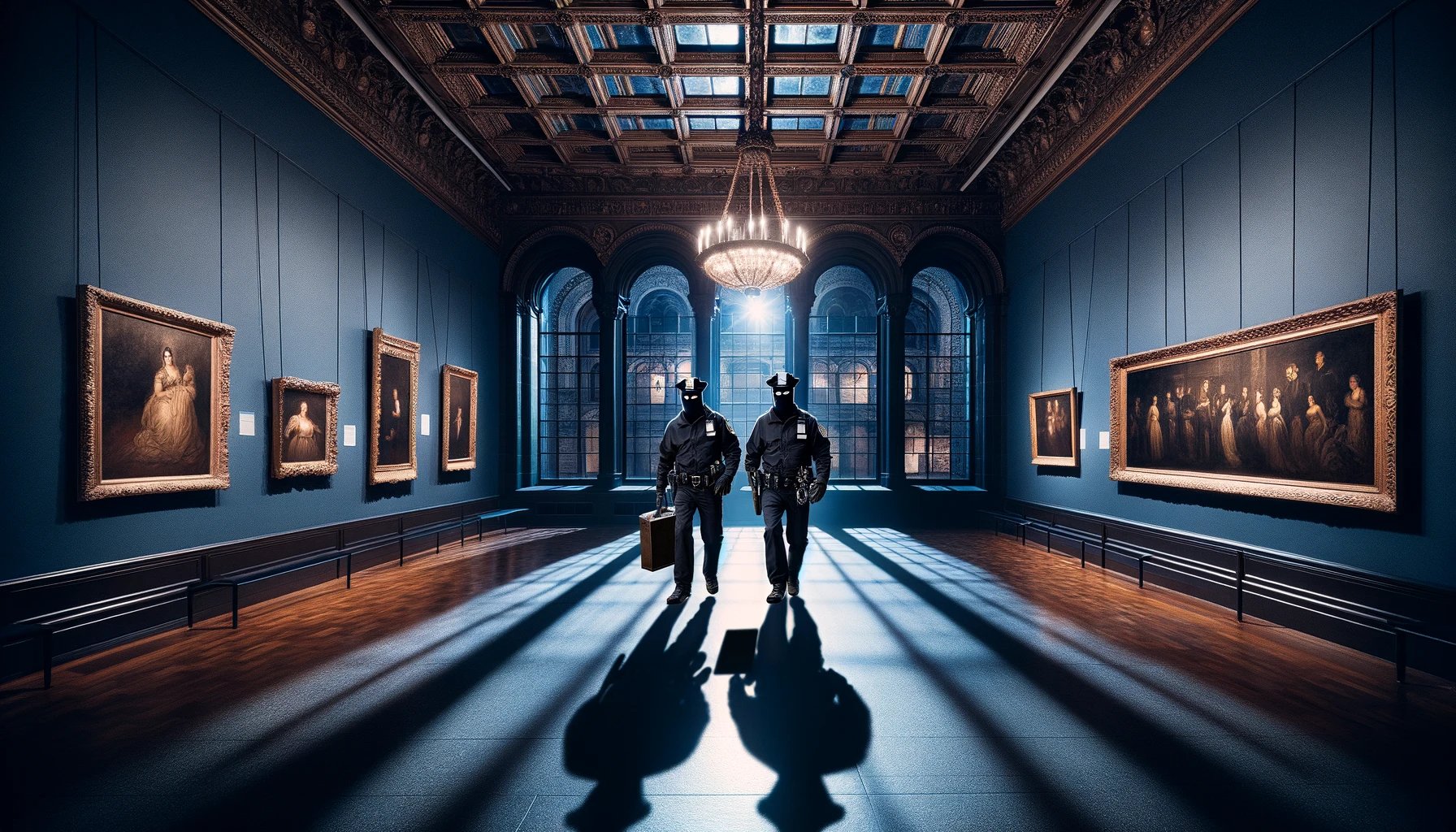On a quiet night in Boston, just after everyone had celebrated St. Patrick’s Day, an art heist unfolded that would enter the history books as the biggest unsolved mystery in the art world. Two men, disguised as police officers, managed to steal art worth about $500 million from the Isabella Stewart Gardner Museum. This theft included 13 pieces of invaluable art by masters like Vermeer and Rembrandt. Even with many people trying to solve the mystery – police, FBI agents, and even curious amateurs – these stolen treasures have never been found.
The story doesn’t stop with the theft; it continues every time someone visits the museum. Empty frames hang on the walls, a haunting reminder of what was lost. They’re not just empty spaces; they’re filled with hope that these pieces will return one day. Richard Abath, the guard who unknowingly let the thieves in, passed away recently, still a significant part of this ongoing story.
Now, let’s talk about five really odd things about this heist that make it stick in people’s minds:
- The Guard in Handcuffs: Richard Abath, the guard who let the thieves in, ended up handcuffed and gagged. While he was never officially accused, the FBI kept an eye on him for years, thinking his actions that night were suspicious. Despite this scrutiny, nothing concrete was ever found linking him to the theft, and a lie detector test he took didn’t clear things up either.
- The Random Loot: The thieves didn’t just grab the most valuable paintings; they took some pretty random items too. Alongside important works of art, they also took a Chinese vase that wasn’t particularly special, a bronze eagle from a flagpole, and a few sketches by Degas that weren’t considered major works. It’s weird because they ignored some super valuable items, like a drawing by Michelangelo, to steal things that weren’t nearly as valuable.
- The Empty Frames: The museum keeps the empty frames on display, not just because of a will or an old mistake, but as a symbol of hope and loss. They remind visitors of what was taken and express the museum’s belief that these art pieces will be returned someday.
- Forgotten Rembrandt: Among the chaos, the thieves left behind a self-portrait by Rembrandt. It seems they might have forgotten it, even though it was just as valuable as other items they took. It’s thought that because it was heavy (painted on oak), they decided to leave it behind.
- A Mystery of Suspects: Trying to figure out who pulled off the heist is like following a complex mystery with many twists. Investigators have considered everyone from local criminals to international art thieves. There were theories involving notorious gangsters and even the Mafia, but no theory has led to the recovery of the art.

The museum hasn’t given up hope of getting the art back. They’ve increased the reward for information leading to the return of the stolen items to $10 million and have shared details of the theft widely, hoping someone will come forward with new information.
This article is based on the following article:
https://www.nytimes.com/2024/03/18/arts/design/unsolved-gardner-museum-heist.html

Background Information
With this background, readers can better understand the gravity of the Isabella Stewart Gardner Museum heist, recognizing not only the financial loss but the irreplaceable gap left in the tapestry of human cultural heritage. The empty frames that hang in the museum today stand as a poignant reminder of what was lost and the ongoing hope for the art’s return.
1. Isabella Stewart Gardner and Her Museum
Isabella Stewart Gardner (1840-1924) was a prominent American art collector, philanthropist, and patron of the arts. She created the Isabella Stewart Gardner Museum in Boston, Massachusetts, as a place to house her extensive collection of art from around the world. The museum, which opened in 1903, is designed to resemble a 15th-century Venetian palace and is known for its intimate, eclectic setting and the personal way Gardner arranged the artwork. Gardner’s will stipulated that the collection remain exactly as she arranged it, with the threat that any changes would result in the collection being auctioned off and the proceeds going to Harvard University.
2. The Significance of the Stolen Art
The stolen artworks included pieces by Vermeer, Rembrandt, and Degas, among others. Johannes Vermeer and Rembrandt van Rijn are two of the most important painters in art history. Vermeer is known for his masterful use of light and color, and his works are extremely rare, with only about 34 paintings attributed to him. Rembrandt, a master of the Dutch Golden Age, is celebrated for his portraits and biblical scenes, known for their emotional depth and innovative use of light. The theft of these pieces was not just a financial loss but a cultural tragedy, as each work represents a significant contribution to the global art heritage.
3. Art Theft in the World
Art theft is one of the oldest and most lucrative forms of crime globally. The FBI estimates that the illicit trade in stolen art and cultural property generates billions of dollars annually. Artworks are stolen for various reasons, including ransom, resale through illegal markets, and private collections. Recovering stolen art is challenging due to the secretive nature of illegal art transactions and the lack of documentation or provenance that accompanies illicitly acquired pieces.
4. Understanding Art’s Value
Art’s value isn’t just monetary; it includes historical, cultural, and emotional significance. Artworks like those stolen from the Gardner Museum hold immense historical value, providing insights into the periods they were created, the artists’ lives, and the techniques used. Culturally, they contribute to our understanding of different societies, beliefs, and aesthetics. Emotionally, art has a profound impact on individuals, evoking feelings and thoughts, and contributing to a shared human experience.
5. The Role of Museums
Museums play a crucial role in preserving, interpreting, and displaying cultural and historical artifacts. They are guardians of human heritage, providing spaces where the public can engage with art and artifacts that span history and geography. Museums also serve educational purposes, offering insights into different cultures and epochs through their collections and exhibitions.
Please subscribe to Insight Fortnight, our biweekly newsletter!
